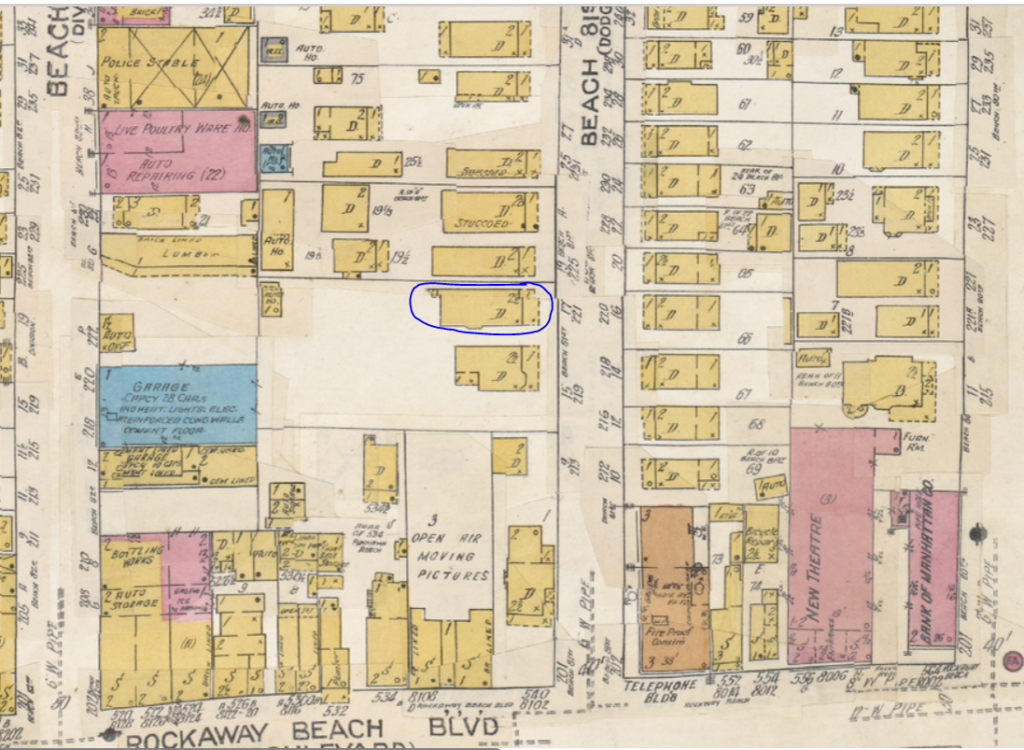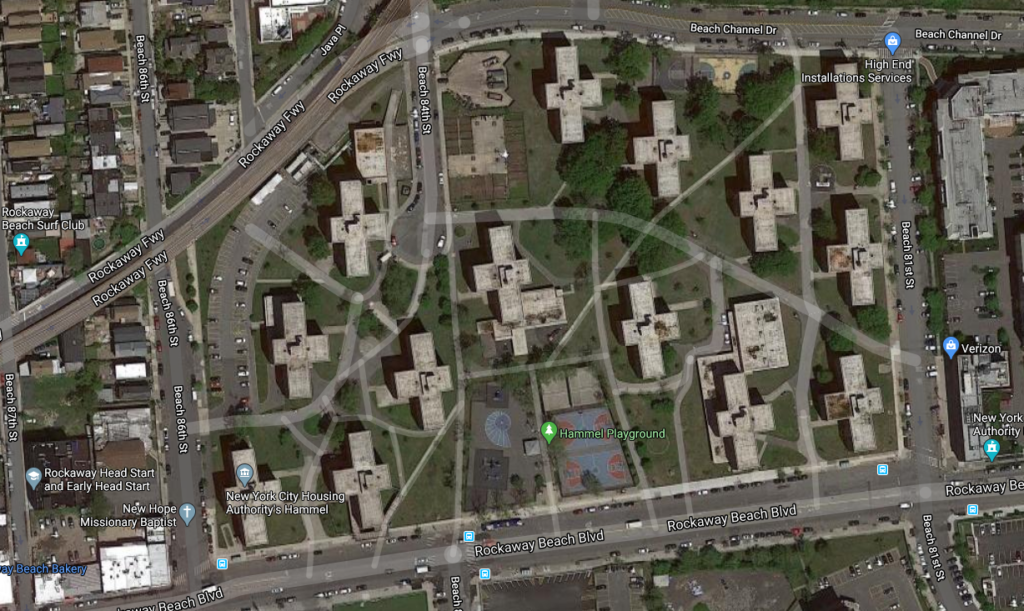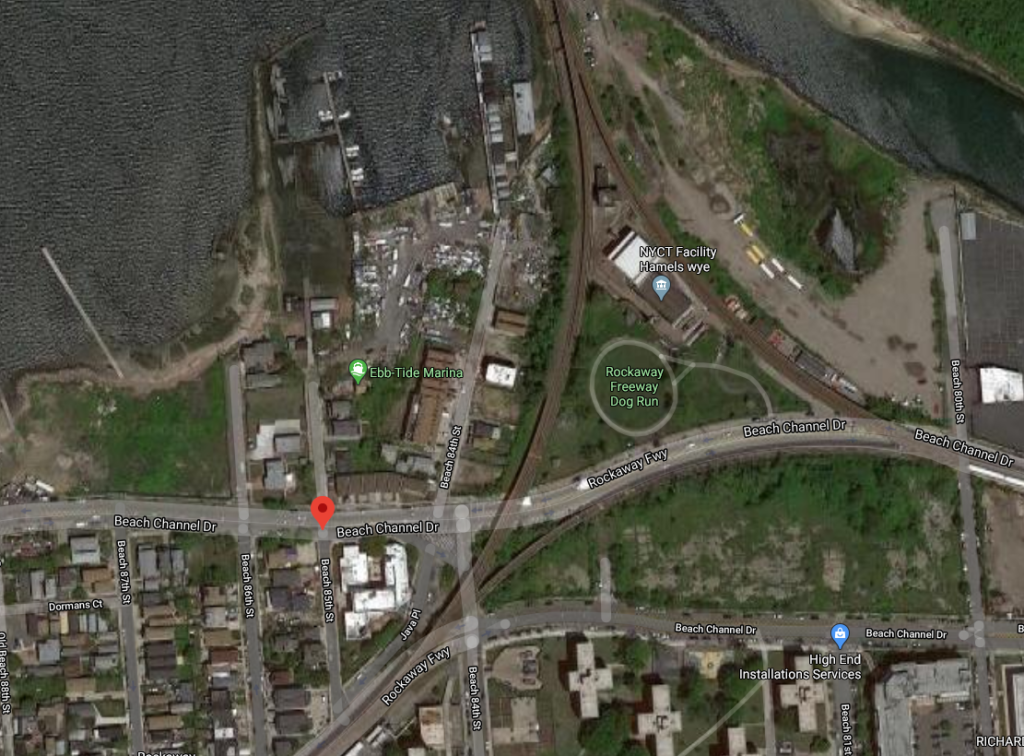Cats in the Mews: February 21, 1928

A veteran mother cat with strong maternal instincts saved her five kittens when a two-story frame house caught fire in the Hammels section of the Rockaways. This is just a short, sweet story, but I added some history since this is my first story that took place on the Rockaway Peninsula in Queens.
According to the Brooklyn Times Union, the evening fire on February 21, 1928, heavily damaged a residence occupied by the Klein family at 221 Beach 81st Street. After the fire was out, 16-year-old Florence Klein went looking for her cat, Mary, and the five newborn kittens.
When Florence reached the room where the cats had been, they were nowhere to be found. The young woman assumed they had run away to escape the water that was pouring down from the second floor.

Sure enough, she found the mother cat and her kittens in an extension of the house, where they had been safe from harm. The fire did considerable damage to the roof of the building, so everyone had to find a new home.
A friend of the Klein family volunteered to take the cats while Harry Klein looked for a new residence for his wife and children. I’m not sure if this friend knew what she was in for: Mary reportedly held a record for motherhood, having given birth to 23 kittens in five years. (Mary may have been the queen mother cat of Queens County, but she couldn’t have held a candle to Lillian Russell, the Dyker Meadow Golf Club cat, who gave birth to 66 kittens in about the same time period.)
Based on old newspaper ads that I found advertising “rooms for rent” at 221 Beach 81st Street, I assume the house where this cat story took place was a rooming house. Prior to living here, the Kleins rented a small bungalow duplex at 32 Beach 81st Street, which was closer to the ocean.
According to the 1920 census, Harry and Rae were both born in Hungary in the 1880s; Harry came to America in 1900 and Rae arrived in 1904. Harry worked as a canvasser for a milk company. The couple had two daughters: Rose, who was 19 when this story took place, and Florence.
A Brief History of Hammels
The Klein family residence was in the Hammels section of Rockaway Beach, Queens. This was once a neighborhood dominated by summer bungalows and rooming houses constructed in the late 1800s and early 1900s.

Most of the homes in Hammels were razed to make way for several large, low-income public housing units. One of these projects was the Hammel Houses, a 14-building complex that replaced the Klein’s old neighborhood when it was erected along Rockaway Beach Boulevard between Beach 81st and 86th Streets.
The Hammel Houses, constructed in 1954, were among the first in a series of urban renewal projects (aka Slum Clearance Projects) that forever changed the face of Rockaway Beach. During this time, more than 1,700 families were displaced from their aging one- and two-story frame houses, apartments, rooming houses, and summer bungalows.


Hammels was named for a local landowner, Louis Hammel (1836-1904), a German entrepreneur who came to America and made his home in Elm Park on Staten Island. The neighborhood originated as a summer resort community based on a series of four or five boardwalks that ran between Jamaica Bay and the ocean.


One of the earliest structures was a hotel called the Eldert House, which was run by Garret V.W. Eldert. The hotel was located near the bay on present-day Beach 85th Street (previously called Hammel Avenue, as noted on the 1891 map below). Louis Hammel took over the Eldert House lease in 1869, renaming it Hammels Hotel. Over time, “Hammels” came to designate the entire community.
When the New York and Woodhaven and Rockaway Branch Railroad extended a trestle across Jamaica Bay in 1880, a railroad station called Hammels Depot was constructed near the hotel, which could accommodate thousands of visitors a year. Hammels Dock–aka Fifth Landing–was a regular stop for boats of the Iron Steamboat Company, which carried day visitors from Manhattan.



According to Katie Lucev, the daughter of the late Rockaway Beach Historian, Emil R. Lucev Sr., Hammels Hotel was enlarged several times over the years, eventually evolving into an L-shaped building with a mansard-style roof. The property also had a small shed, which was the first headquarters for the Rockaway Beach Volunteer Fire Department (basically, it housed a ladder and a man-powered bucket wagon).
With the advent of the automobile, Hammels and all of the Rockaways began to decline as more people drove to modern new parks, such as Jones Beach State Park. By the late 1930s, Hammels had become a beach primarily for city residents who could not afford a car and thus depended on public transit.
The New York City Housing Authority purchased the land for the Hammel Houses on July 16, 1952. About a year later, the old frame house where a mother cat once saved her kittens was taken down to make way for Building #10, marked on this NYCHA site map.




